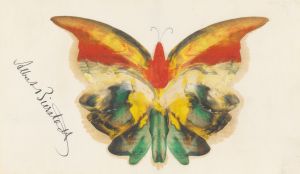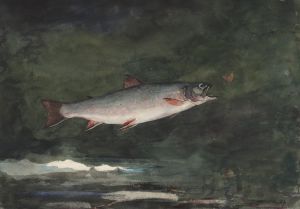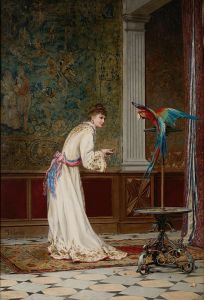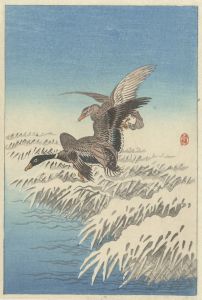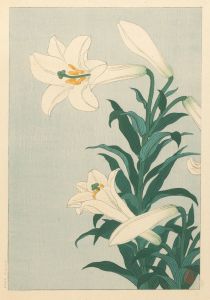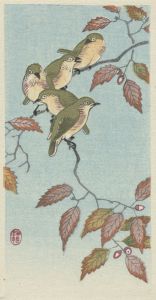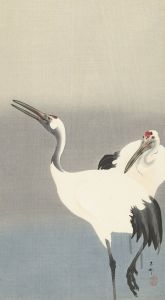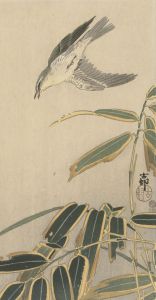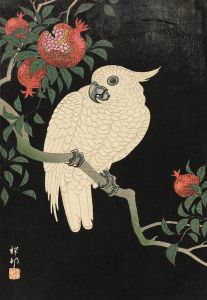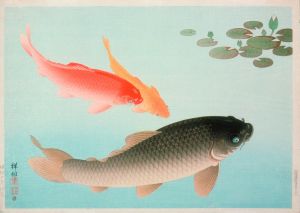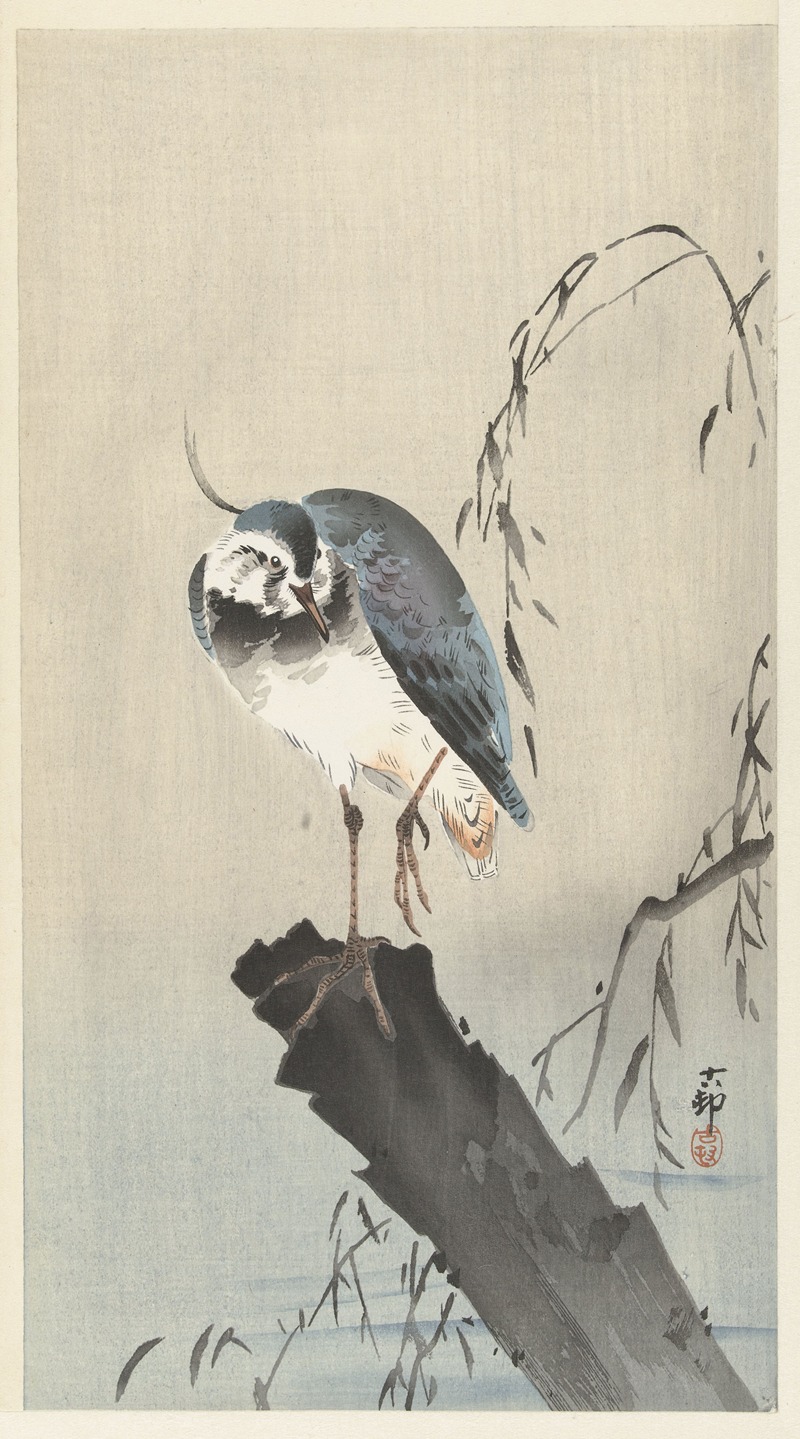
Lapwing on tree stump
A hand-painted replica of Ohara Koson’s masterpiece Lapwing on tree stump, meticulously crafted by professional artists to capture the true essence of the original. Each piece is created with museum-quality canvas and rare mineral pigments, carefully painted by experienced artists with delicate brushstrokes and rich, layered colors to perfectly recreate the texture of the original artwork. Unlike machine-printed reproductions, this hand-painted version brings the painting to life, infused with the artist’s emotions and skill in every stroke. Whether for personal collection or home decoration, it instantly elevates the artistic atmosphere of any space.
Ohara Koson (1877–1945) was a prominent Japanese artist known for his exquisite woodblock prints, particularly those depicting birds and flowers, a genre known as kachō-e. His work is often associated with the shin-hanga movement, which revitalized traditional Japanese woodblock printing by incorporating Western elements such as perspective and shading, while still maintaining the essence of traditional Japanese aesthetics.
One of Koson's notable works is "Lapwing on Tree Stump." This piece exemplifies his skill in capturing the delicate beauty of nature, a hallmark of his artistic style. The print features a lapwing, a type of bird known for its distinctive crest and striking plumage, perched gracefully on a tree stump. The composition is both simple and elegant, focusing on the bird's form and the texture of the tree stump, set against a minimalistic background that highlights the subject.
Koson's attention to detail is evident in the meticulous rendering of the lapwing's feathers and the bark of the tree stump. The use of color is subtle yet effective, with muted tones that evoke a sense of tranquility and harmony with nature. This approach is characteristic of Koson's work, where he often employed a restrained color palette to enhance the natural beauty of his subjects.
The "Lapwing on Tree Stump" is a fine example of Koson's ability to blend traditional Japanese techniques with influences from Western art. During the shin-hanga movement, artists like Koson sought to appeal to both Japanese and Western audiences, and his works were particularly popular among Western collectors. This cross-cultural appeal contributed to the international appreciation of Japanese woodblock prints during the early 20th century.
Koson's prints were produced in collaboration with publishers such as Watanabe Shōzaburō, who played a significant role in the shin-hanga movement. Watanabe's efforts to promote these prints abroad helped establish Koson's reputation outside Japan, and his works were exhibited in various international exhibitions, further cementing his status as a master of the kachō-e genre.
Despite the popularity of his work, detailed information about Koson's personal life and career is relatively scarce. He was born in Kanazawa, Ishikawa Prefecture, and studied painting under Suzuki Kason. Throughout his career, he used different names, including Ohara Hōson and Ohara Shōson, reflecting the common practice among Japanese artists to adopt different pseudonyms.
Koson's legacy endures through his prints, which continue to be admired for their beauty and technical excellence. "Lapwing on Tree Stump" remains a testament to his artistic vision and his contribution to the shin-hanga movement, capturing the serene elegance of nature with a timeless appeal. His works are held in high regard by collectors and are featured in numerous museum collections worldwide, ensuring that his artistic achievements are appreciated by future generations.






